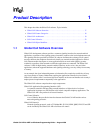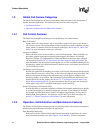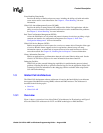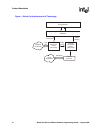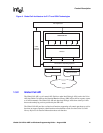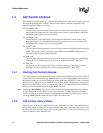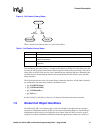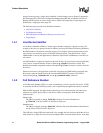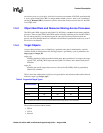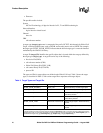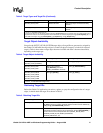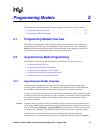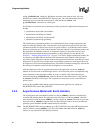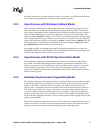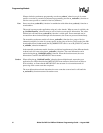
Global Call API for HMP on Windows Programming Guide — August 2006 25
Product Description
one call may exist on a given line). A line device can have a maximum of 20 CRNs associated with
it. At any given instant, each CRN is a unique number within a process. After a call is terminated
and the gc_ReleaseCallEx( ) function is called to release the resources used for the call, the CRN
is no longer valid.
1.5.3 Object Identifiers and Resource Sharing Across Processes
The CRNs and LDIDs assigned by the Global Call API library can not be shared among multiple
processes. These assigned CRNs and LDIDs remain valid only within the process invoked. That is,
for call control purposes, you should not open the same physical device from more than one
process, nor from multiple threads in a Windows environment. Unpredictable results may occur if
this advice is not followed.
1.5.4 Target Objects
A target object provides a way of identifying a particular entity that is maintained by a specific
software module. In API function calls, the target object is specified by a pair of parameters, the
target_type and target_ID:
target_type
Identifies the kind of software module and the entity that it maintains. For example, the target
type GCTGT_GCLIB_CHAN represents the Global Call Library and a channel entity that it
maintains.
target_ID
Identifies the specific target object, such as a line device ID (LDID), which is generated by
Global Call at runtime.
Table 2 shows the combinations of physical or logical entities and software module entities that can
make up a target type (target_type).
The possible software modules include:
• GCLib
• CCLib
• Protocol
Table 2. Supported Target Types
Software Module
Entity
System Network Interface Channel CRN
GCLib SSSS
CCLib S S S S
Protocol SV SV SV
Firmware SV SV
S = Supported
SV = Supported with Variances, see the appropriate Global Call Technology Guide for more information.



